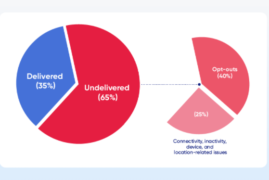If you want to make your app available for download for a global audience, you need to list it in app stores. Now, most of the app stores charge a fee on paid apps and in-app purchases. As a typical middleman, they take a cut of the app revenue for facilitating your app distribution. That’s how app stores make their money.
In this post we’re taking a look of Apple App Store fees, Google Play Store fees and highlight fees for some other bigger app stores.
How do Google Play Store and Apple App Store make money?
The standard commission rate for distributing your app seems to be 30%, but each app store also has its exceptions. More precisely, the app store revenue comes from taking a commission on:
Apple App Store fees
App distribution via Apple App Store gives access to over a billion customers in 175 countries and regions on iPhone, iPad, Mac, Apple TV, and Apple Watch. There are no hosting fees, but there’s an annual fee of $99 for the Apple Developer Program ($299 for the enterprise version). And Apple will take a share of your app revenues.
So how much percentage does Apple take from your app revenue? Until November 2020, it was a 30% commission from the total price of all paid apps and in-app purchases from the App Store. However, since then, two rates can apply:
- 30% share when you make more than $1 million in annual net app revenue;
- 15% share when you:
- make less than $1 million in annual net app revenue;
when you’re new to the App Store; - you’re after 12 months of service in the App Store with a subscription-based app.
- make less than $1 million in annual net app revenue;
Google Play Store fees
Google takes a 30% share of your app revenue as well, and also Google’s cut on your revenue for subscriptions decreases to 15% after a year. There’s also a one-time $25 registration fee for the developer account.
Just like Apple, also Google makes sure to legally oblige you to give a share of your app revenue. Here’s a snippet from Google’s guideline:
Summary of app store fees
Most app stores take a 30% commission on app revenues from in-app purchases, subscriptions, and paid app downloads. As typical middlemen, that’s the way they make their money.

